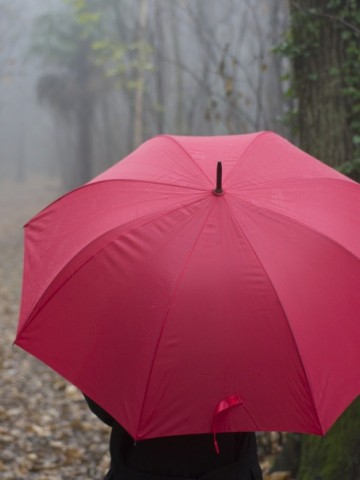A disturbing and seemingly relentless wave of cases is crashing across the American news cycle: the arrest and charging of teachers for the sexual abuse and exploitation of their minor students. Each new headline sparks public outrage, confusion, and a pressing question: Why is this happening so frequently now? Is it a genuine epidemic or simply an era of unprecedented exposure?
This article seeks to move beyond the sensationalism to understand the complex psychological, societal, and systemic factors that lead a trusted adult a "serious and educated" individual to prey upon a child in their care. We will explore the motivations of the abuser, the complex dynamics that ensnare the student, and the potential scale of a crisis that often thrives in silence.
The "Why": Unpacking the Psychology of the Abuser
To label these relationships as "affairs" or "romances" is a profound and dangerous mischaracterization. They are, unequivocally, a severe abuse of power and a criminal act of exploitation. The psychological drivers are complex and often interwoven:
-
Pathological Need for Validation: Many abusers are not seeking sex per se, but a potent form of adoration and validation. The classroom can be a stage where a teacher, who may feel inadequate, powerless, or aging in their personal life, basks in the admiration of young people. A student's crush can be misinterpreted and manipulated into a fantasy of being seen as "cool," "desirable," and powerful. The student becomes an object to repair their fragile ego.
-
Arrested Development and Identity Issues: Some offenders exhibit a profound emotional immaturity. They may identify more with their students than with their adult peers, leading to dangerously blurred boundaries. This "peer-like" mentality fosters an inappropriate sense of camaraderie that can be a gateway to grooming behavior.
-
The Abuse of Power and Control: Teaching is inherently a position of authority. For a predator, this authority is the primary tool of exploitation. They control grades, social standing, and access to opportunities. This dynamic is intoxicating for someone with a need to dominate and control another human being completely. The power imbalance is absolute, making true consent from the student impossible.
-
Predatory Grooming as a Skill Set: These individuals are often master manipulators. Grooming is a slow, calculated process of breaking down boundaries. It starts with special attention: compliments, extra help, shared secrets. It progresses to isolation: convincing the student that "no one else understands you like I do." They test limits with inappropriate conversations, texts, and touch, all while positioning themselves as the student's sole ally and confidant. This methodical process desensitizes the victim and makes them complicit in their own abuse, a source of immense guilt and confusion later.
-
Cognitive Dissonance and Justification: Abusers are adept at rationalizing their actions. They tell themselves, "This is love," "They are so mature for their age," or "I'm rescuing them from a bad home life." This self-deception allows them to compartmentalize their criminal behavior from their identity as a "good teacher."
The Student's Perspective: Why Does a Victim "Participate"?
It is critical to understand that a child's involvement is never their fault. Their "participation" is a carefully engineered response to manipulation.
-
The Need for Connection: Adolescents are developmentally searching for identity, validation, and connection outside their family. A teacher, a revered authority figure, offering exclusive attention is incredibly flattering and can feel like love to an emotionally vulnerable young person.
-
Grooming and Manipulation: As outlined above, the grooming process systematically breaks down their defenses. The abuser makes them feel unique and understood, creating a dependent bond.
-
The Inability to Comprehend Power Dynamics: A teenager cannot fully grasp the immense power differential. They may believe they are making a conscious choice, unaware they are being psychologically manipulated by a expert tactician.
-
Fear and Coercion: The abuser often holds their academic future, social reputation, and family relationships in their hands. The threat of exposing "their secret" or failing a class is a powerful silencer.
Prevention: How Can We Stop This?
Prevention requires a multi-layered approach that moves beyond reactive outrage:
-
Stringent Boundaries and Training: Schools must implement and enforce crystal-clear, non-negotiable policies on adult-student interactions. This includes strict rules on communication (no private texts/social media), physical touch, and one-on-one meetings (e.g., windows in doors). Mandatory annual training for all staff on identifying grooming behaviors in themselves and others is essential.
-
Empowering Students and Parents: Education on healthy relationships and appropriate boundaries must include discussions on the manipulative tactics of groomers. Students need to know what to look for and, most importantly, that they will be believed and protected if they report something.
-
Creating Multiple Reporting Channels: Students must have anonymous and safe ways to report concerns to counselors, administrators, or external hotlines without fear of retaliation.
-
Cultural Shift in Schools: Administrators must prioritize student safety over protecting the reputation of a school or a popular teacher. There must be a zero-tolerance policy that treats every allegation with the seriousness it deserves.
Quantifying the Crisis: Knowns and Unknowns
There is no single national database that tracks all instances of sexual misconduct in schools. However, data from various sources paint a alarming picture:
-
The Government Accountability Office (GAO) estimated in a 2020 report that millions of K-12 students may be subjected to sexual misconduct by school personnel at some point during their school careers.
-
The Education Department reported that from school years 2017-18 through 2021-22, there were over 16,000 cases of educator misconduct involving students reported. While not all are sexual in nature, a significant portion are.
-
The advocacy group Stop Educator Sexual Abuse Misconduct & Exploitation (SESAME) suggests that roughly 1 in 10 students will experience sexual misconduct by a school employee by the time they graduate high school.
These numbers indicate that what we see in the news is likely only the tip of the iceberg. Many cases are never reported due to shame, fear, ineffective school investigations, or plea deals that keep details out of the public record.
A Catalogue of Cases: The Unfolding Scandals (Recent 5 Years)
The following is a non-exhaustive list of notable cases that have become public in the last five years, illustrating the pervasive nature of the problem:
-
Jennifer Faith Cottle (Utah, 2024): A former elementary school teacher was charged with sexually abusing multiple students over several years. The case emerged after a years-long investigation.
-
Alexis Dyer (Florida, 2024): A 25-year-old high school teacher was arrested after allegedly sending explicit videos to a 17-year-old student and arranging to meet him for sex.
-
Christopher Schrauf (California, 2023): A former high school music teacher pleaded guilty to sexually abusing multiple male students over a decade. The district paid a $100 million settlement to his victims.
-
Bethany K. Lockhart (Ohio, 2023): A middle school teacher was sentenced to prison for having a sexual relationship with a 13-year-old student. The abuse began with grooming via text messages.
-
Caitlin Thao (Minnesota, 2023): A 24-year-old special education teacher was charged with sexually assaulting a 16-year-old male student at the school.
-
Brianna Coppage (Missouri, 2023): A 28-year-old teacher made headlines after being arrested for allegedly having sex with two 16-year-old students. She was reportedly pregnant with one of the student's child at the time of her arrest.
-
Devin Rice (Georgia, 2022): A former high school teacher and coach was sentenced to 50 years for sexually exploiting multiple students and possessing child sexual abuse material.
-
Jennifer Watson (Texas, 2022): A former middle school teacher was sentenced to 10 years in prison for an inappropriate relationship with a 13-year-old student.
-
Nicholas LaTourette (Ohio, 2021): A former band director was sentenced to over 50 years in prison for sexually battering multiple students over several years.
-
Carlton Anderson (Maryland, 2020): A high school English teacher was sentenced for sexually abusing a student. His case was part of a larger scandal in Montgomery County that revealed systemic failures in reporting.
The Dark Figure of Crime: What We Don't Know
For every case that makes the news, an untold number likely remain hidden. This "dark figure" of crime exists due to:
-
Victim Shame and Trauma: The intense psychological manipulation leaves victims feeling responsible.
-
Institutional Secrecy: Schools sometimes handle complaints internally to avoid scandal, allowing predators to resign quietly and move to another district a practice known as "passing the trash."
-
Lack of Evidence: Grooming is designed to be secretive, often leaving no physical evidence until the abuse is severe and ongoing.
-
Community Disbelief: The idea of a "popular, award-winning teacher" being a predator is so cognitively dissonant that allegations are sometimes dismissed as lies or exaggerations.
The current wave of revelations is not necessarily proof of a sudden new epidemic, but rather a painful and long-overdue unmasking of a deep-seated problem. It is the result of better (though still inadequate) reporting mechanisms, a cultural shift toward believing victims, and the undeniable power of digital evidence like text messages.
The solution lies in rejecting the myth of the "romantic exception" and confronting these crimes for what they are: a profound betrayal of trust and a devastating abuse of power. Only through relentless transparency, education, and a system designed to protect the most vulnerable can the cycle of exploitation be broken. The safety of millions of children depends on our willingness to look this uncomfortable truth in the eye.













